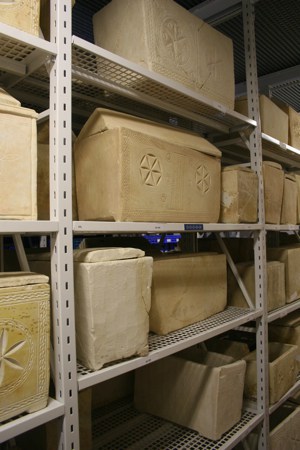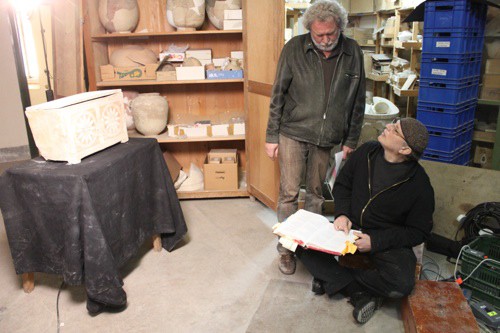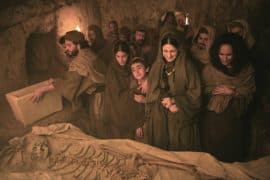Since I began writing about the “Jesus Family tomb” discovered in East Talpiot, Jerusalem around Easter 1981, by far the most common response by colleagues and media reports alike has been the inaccurate generalization that the names found in the tomb were “extremely common.” The obvious intention of this assertion is to imply that “this Jesus son of Joseph” was very unlikely to be identified with Jesus of Nazareth,” even with the cluster of other family associated names, since there were likely any number of such tombs with this configuration of names in 1st century Jerusalem. This assertion has been thoroughly and responsibly refuted in numerous places, see for example, “Probability, Statistics, and the Talpiot Tomb, “Inside the Numbers of the Talpiot Tomb,” “The Talpiot Tomb: What Are the Odds?.” My own overview analysis is here, “The Tombs at Talpiot: An Overview of ‘The Jesus Discovery,'” and especially the book, The Jesus Discovery, that I highly recommend for anyone wanting to delve into “all things Talpiot.” Regardless, the assertion continues, even about the name Jacob, or “James,” that occurs only 1.6% of males of the period.
Most scholars who work in the field of late 2nd Temple Judaism, including those who deal with the emerging Jesus movement, are quite familiar with the masterful work by L. Y. Rahmani, A Catalogue of Jewish Ossuaries in the Collections of the State of Israel (Jerusalem: The Israel Antiquities Authority, The Israel Academy of Sciences and Humanities, 1994). Many of us have copies in our personal libraries. Rahmani’s work lists the 897 ossuaries that were in the Israel State collection up to August, 1989, whether plain or decorated, including the 227 that are inscribed. There are photos, some color, but mostly B&W, of all the decorated ones and a few of the plain ones. Since the vast majority of these ossuaries are from Jerusalem and its environs, dating approximately from 20 BCE to 70 CE, this work is indispensable to anyone working in this field–including those interested in Christian Origins. Unfortunately, Rahmani is now nearly 30 years out of date, and there are hundreds of additional ossuaries in the Israel State collection plus many more hundreds that are in other collections, both public and private (see the works of Figueras, Bagatti, Testa, et al.)

So far as the ossuaries themselves go Rahmani is the best we have, but in terms of inscriptions there is a recent companion work that has become essential for all of us, namely, Corpus Inscriptionum Iudaeae/Palaestinae, with editors Hannah M. Cotton, Leah Di Segni, Werner Eck, Benjamin Isaac, Alis Kushnir-Stein, Haggai Misgav, Jonathan Price, Israel Roll and Ada Yardeni, Vol. 1: Part 1:1-704 (De Gruyter, Götingen, 2010). The work is abbreviated CIIP. It includes 704 inscriptions, 600+ of which are from ossuaries, which has tripled the evidence one had available in 1989 via Rahmani for inscribed ossuaries. This also shows us that Rahmani’s ratio of inscribed to uninscribed (897/227), as represented in the Israel State collection is low compared to CIIP with approximately 2000 “known” ossuaries, 600+ of which are inscribed. These come from an estimated 900 burial caves, see Amos Kloner and Boaz Zissu, The Necropolis of Jerusalem in the Second Temple Period, Interdisciplinary Studies in Ancient Culture and Religion 8 (Leuven-Dudley, MA: Peeters, 2007), another essential work for those interested in Jerusalem in the late 2nd Temple period. 
In 2011 I spent over two months going carefully through CIIP, reading every one of the 704 inscriptions. As I moved along, I assembled detailed notes, correlated when possible with Rahmani, of all the names that are relevant to those found in the Talpiot tombs, namely Yeshua, Yehosef/Yose, Yehuda, Mariamene/Mariam Maria/Marya, Mara, and Matya. I also made three trips to Israel and Simcha Jacobovici and I examined and photographed all the relevant ossuary inscriptions stored at the Bet Shemesh warehouse, in the basement of the Rockefeller, in the basement of the Israel Museum, and several private collections (Franciscans, etc.).
I think both specialists and non-specialists might find this material of great interest, particularly those who have limited their work to the inscriptions in Rahmani, thus missing about 400 of the available ossuary inscriptions. I am pleased to share it with everyone. Here is the PDF containing a summary of my findings, that you can download here.









Comments are closed.